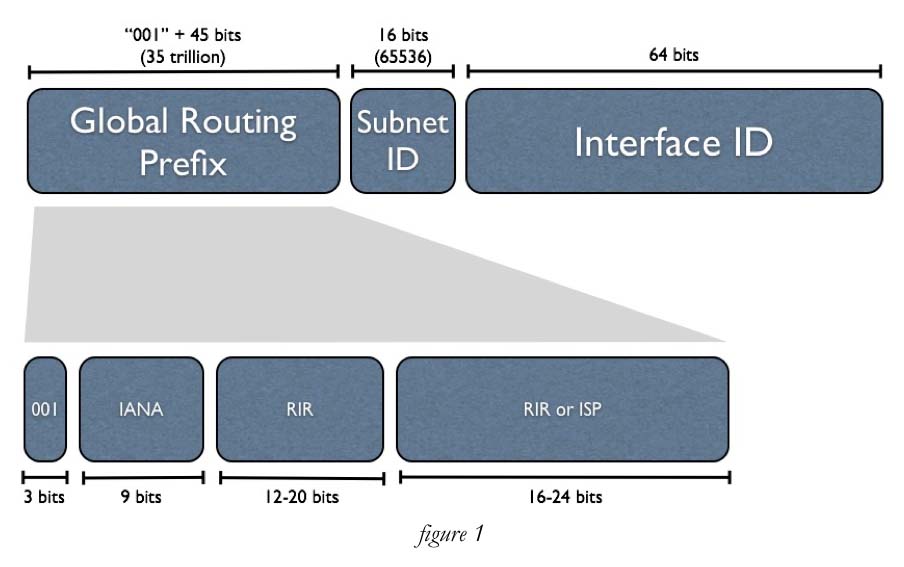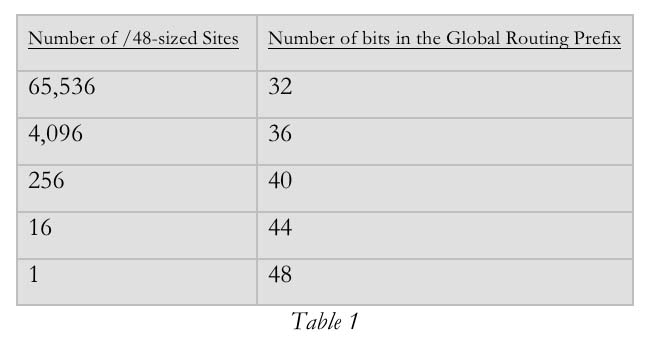Here is part one of a four-part blog on creating an IPv6 addressing plan. Today, we’ll introduce the topic then discuss IPv6 address construction as well as how many IPv6 addresses you’ll need.
Your IPv6 addressing plan
Coming up with an IPv6 addressing plan is one of the most important initial tasks for any organization proceeding with IPv6 adoption. And since most IPv6 deployments are green-field, creating an IPv6 addressing plan offers both unique challenges and benefits.
One critical challenge for most organizations is dealing with a new addressing protocol for which little, if any, internal operational or architectural experience may exist. Another challenge includes understanding how to most effectively manage the new complexities and overwhelming abundance of IPv6. This is especially critical given efforts by organizations to leverage emerging automation technologies for their networks (effective management of address resources allows for tighter host control and is perceived as a significant prerequisite for automation).
For most organizations, IPv6 will be deployed in parallel with IPv4 in an existing IPv4 production internetwork. It is perhaps natural to hope that the existing IPv4 addressing scheme might simply be duplicated in some fashion in IPv6. Depending on the organization, the design and administrative ease to deploy and manage IPv6 using such a method might initially prove advantageous. But any temporary advantage gained by such a shortcut will ultimately be dwarfed by the ease and efficiency of operation and design offered by a proper IPv6 addressing plan—one that incorporates the key benefits of the exponentially larger allocations possible with IPv6.
The virtually inexhaustible supply of IPv6 address space allows for an addressing plan no longer constrained by the scarcity of IPv4 addresses. Techniques such as Classless Inter-Domain Routing (CIDR) and Variable Length Subnet Masking (VLSM), previously required in IPv4 to economically match subnet size to host count on a given network segment, become unnecessary and obsolete in IPv6.
Instead, a consistent and legible addressing scheme is made possible by the abundance of IPv6 addresses. As we’ll see, this abundance also allows for the option of assigning significance to groups of site subnets according to function or location. This can make firewall policies and route aggregation much easier to design and administer. Such techniques, along with standard IPv6 subnet sizes, promise to improve operational efficiency and maximize future network scalability.
How IPv6 addresses are constructed
Before getting into the details related to an IPv6 addressing plan, it may be useful to briefly review how IPv6 addresses are constructed. Recall that an IPv6 address consists of 128 bits. These bits are bisected to create a boundary between the “network number” and the “host number.” More specifically, the 64 bits of the network number portion of the address are divided into the global routing prefix and the subnet ID. The first three bits of any globally routable address are set to 001. The next 45 bits define the global routing prefix. The 16 bits following that are the subnet ID. The remaining 64 bits of the address are reserved for the interface ID. Also depicted below is which organization is responsible for assigning the relevant bits of the global routing prefix (see figure 1).

For most organizations, the majority of planning required for their IPv6 addressing scheme will focus on the 16 bits of the subnet ID.
How many IPv6 addresses will you need?
This question might seem a little peculiar given that the basic interface subnet for IPv6, a /64 (or 1.8×1019 addresses), contains approximately 4 billion times the number of addresses available in all of IPv4 space. But as mentioned earlier, it is precisely this address abundance that provides new opportunities for greater consistency and scalability in IPv6 addressing plans.
First, you’ll need to determine the appropriate size allocation to request for a primary allocation. Organizations with single sites typically receive a /48 (or 1.2×1024 addresses). Organizations with multiple sites receive a larger allocation based on the number of overall sites that need addressing. Table 1 shows the number of /48-sized sites supported by the number of bits in the global routing prefix for various allocation sizes.

It’s unlikely of course that any single organization would have 65,536 sites in need of addressing! Rather, larger allocations are reserved by the RIRs for assignment to service providers, who will in turn allocate smaller prefixes to organizations based on their addressing requirements.
You may notice that only global routing prefix sizes in multiples of four bits are listed above. This practice, demonstrated in more detail later in the document, is used to preserve prefix legibility and concision (because prefix lengths not in multiples of four are not as immediately legible and may force address expansion to clarify the resulting groups of available subnets).
Next time: assigning IPv6 subnets and addresses within a site.





